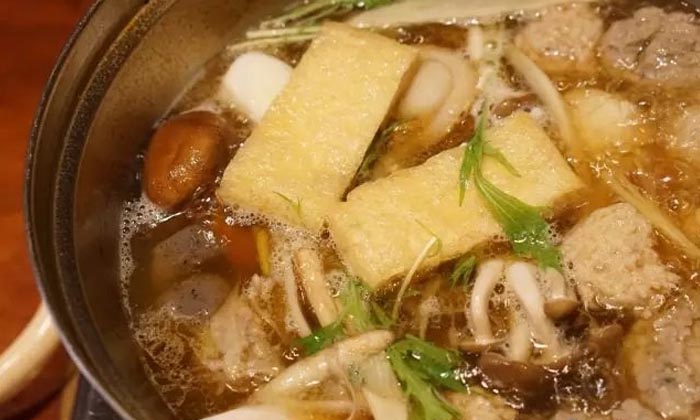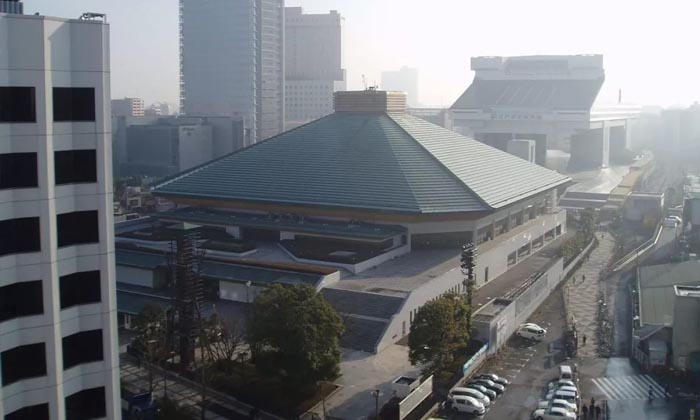Sumo Wrestling Show in Tokyo
Do you want to see a sumo wrestling show during your visit to Tokyo? The best way to experience sumo culture is to visit sumo stables or to see Sumo Wrestling shows in Tokyo.The origin of Japanese national sumo wrestling can be traced back to more than 1,500 years, originally a movement dedicated to Shinto gods. Since then, the rules and rituals have gradually been developed and improved, and the sumo we now see is almost the same as from the Edo period (1603 to 1967). Through the continuous change of history, the sumo culture is now deeply rooted in Tokyo's Ryogoku area.
Sumo Wrestling Shows in Tokyo
Sumo's base camp Ryogoku Kokugikan is located in Ryogoku area. Ryogoku Kokugikan is Japan's largest indoor sumo stadium right next to the station. Sumo tournaments are held annually, 3 times a year for 15 days each. The periods it takes place are in January, May, and September, ending after 15 days. Ticket price depends on how close your seat is to the ring, and the price of a standard seat is about 4,000 yen per person. Ryogoku is located next to the Sumida River and has a small workshop for the production of traditional crafts and a sumo class that serves as a training base for Grand Sumo fighters. Some sumo classes allow you to visit their morning exercises, but there are strict restrictions, you would have to investigate yourself.
If your Tokyo trip happens to be during the three annual tournaments, you will also be able to see the flying flags, the beating taiko drums, and the amazing strength of the wrestlers. There is an event every morning during the contest, but the competition of the top players is from 4:00 pm and ends at 6:00 pm; it is recommended that you stay for a full day. You can take a stroll around the venue first, visit the museum, and go outside the field in the early afternoon to wait for the participating sumo wrestlers. If you want to enjoy authentic sumo cuisine, head to a local restaurant and order a hot pot stew with meat and vegetables. It is called the chanko-nabe that is popular and loved by the sumo wrestlers.

Visit Sumo Wrestlers for Morning Exercises
If there are no sumo tournaments taking place during your visit to Tokyo, the best way to experience sumo culture is to visit sumo stables. This is also known as Asakeiko, Asageiko, or Keiko. There are about 45 sumo stables in the Tokyo area, most of which are located in the Ryogoku district of Tokyo. However, sumo stables are not arbitrarily open to the public, and only a small number of stables are allowed visitors, such as Kasugano Beya near Ryogoku Station, Takasago Beya near Asakusa Station, etc.
The tour is free of charge but requires a guide that is fluent in Japanese and familiar with the Sumo culture. During your visit there, you must strictly abide by the rules and you must not disturb the conduct of the training. It is best to sit quietly and watch practice and training. Keiko's time varies between stables, but usually starts at 6:00 am or 7:00 am and lasts for about 3 hours. Please note that there are generally no practices during the weekend. In addition, sumo wrestlers usually take a week off after the sumo contest.

Other Sumo Events
For those who are visiting Japan not during the tournaments, there are a few other ways to see sumo matches. They include exhibition tournaments that are held across the country in between official tournaments and occasional retirement ceremonies of prominent wrestlers.
Do you want to see a sumo wrestling show during your visit to Tokyo? The best way to experience sumo culture is to visit sumo stables or to see Sumo Wrestling shows in Tokyo.The origin of Japanese national sumo wrestling can be traced back to more than 1,500 years, originally a movement dedicated to Shinto gods. Since then, the rules and rituals have gradually been developed and improved, and the sumo we now see is almost the same as from the Edo period (1603 to 1967). Through the continuous change of history, the sumo culture is now deeply rooted in Tokyo's Ryogoku area.
Sumo Wrestling Shows in Tokyo
Sumo's base camp Ryogoku Kokugikan is located in Ryogoku area. Ryogoku Kokugikan is Japan's largest indoor sumo stadium right next to the station. Sumo tournaments are held annually, 3 times a year for 15 days each. The periods it takes place are in January, May, and September, ending after 15 days. Ticket price depends on how close your seat is to the ring, and the price of a standard seat is about 4,000 yen per person. Ryogoku is located next to the Sumida River and has a small workshop for the production of traditional crafts and a sumo class that serves as a training base for Grand Sumo fighters. Some sumo classes allow you to visit their morning exercises, but there are strict restrictions, you would have to investigate yourself.
If your Tokyo trip happens to be during the three annual tournaments, you will also be able to see the flying flags, the beating taiko drums, and the amazing strength of the wrestlers. There is an event every morning during the contest, but the competition of the top players is from 4:00 pm and ends at 6:00 pm; it is recommended that you stay for a full day. You can take a stroll around the venue first, visit the museum, and go outside the field in the early afternoon to wait for the participating sumo wrestlers. If you want to enjoy authentic sumo cuisine, head to a local restaurant and order a hot pot stew with meat and vegetables. It is called the chanko-nabe that is popular and loved by the sumo wrestlers.

Visit Sumo Wrestlers for Morning Exercises
If there are no sumo tournaments taking place during your visit to Tokyo, the best way to experience sumo culture is to visit sumo stables. This is also known as Asakeiko, Asageiko, or Keiko. There are about 45 sumo stables in the Tokyo area, most of which are located in the Ryogoku district of Tokyo. However, sumo stables are not arbitrarily open to the public, and only a small number of stables are allowed visitors, such as Kasugano Beya near Ryogoku Station, Takasago Beya near Asakusa Station, etc.
The tour is free of charge but requires a guide that is fluent in Japanese and familiar with the Sumo culture. During your visit there, you must strictly abide by the rules and you must not disturb the conduct of the training. It is best to sit quietly and watch practice and training. Keiko's time varies between stables, but usually starts at 6:00 am or 7:00 am and lasts for about 3 hours. Please note that there are generally no practices during the weekend. In addition, sumo wrestlers usually take a week off after the sumo contest.

Other Sumo Events
For those who are visiting Japan not during the tournaments, there are a few other ways to see sumo matches. They include exhibition tournaments that are held across the country in between official tournaments and occasional retirement ceremonies of prominent wrestlers.
See Sumo Wrestling in Tokyo
As a reliable Japan travel agency, we provide tours for experiencing sumo wrestling in Tokyo and private chauffeurs for travelers from overseas. Whether you are looking for a sumo wrestling show in Tokyo or a private car service, you can easily find the most suitable one at an affordable price. Contact our representatives to book our Tokyo tours and Tokyo private chauffeurs today.Related Articles You May Like
Most Frequently Asked Questions
-
How long do I have to buy tickets for the Ryogoku Kokugikan Sumo Tournament in Tokyo?Sumo contests are held three times a year at the Ryogoku Kokugikan, with each tournament lasting for 15 days. The periods it takes place are in January, May, and September. Tickets can be reserved 1 month before the start of the tournament. The first and last days of the tournament, as well as the weekends in the middle, are mostly very popular and crowded. It is relatively easier to buy tickets for the weekdays.
-
How much is the sumo ticket for the Ryogoku Kokugikan?Ticket price depends on how close your seat is to the ring and action. A standard seat in the arena is around 4,000 yen per person. Box seats are a lot closer, but they require a group of four. Prices for a four-person box seat starts at around 40,000 yen.
-
Does the Ryogoku Kokugikan provide translation guidance equipment?Yes, the Ryogoku Kokugikan provides a rental service of English audio guides for foreign visitors to listen to the live commentary.
-
How do you get to Ryogoku by public transportation from Tokyo?Ryogoku Station is on the JR Sobu and Toei Oedo lines.
From Haneda Airport: 55 minutes by train.
From Narita Airport: 90 minutes by train.
From Shinjuku Station: 22 minutes on the JR Sobu Line to Ryogoku Station.
From Tokyo Station: Take the JR Yamanote Line to Akihabara Station and transfer to the JR Sobu Line to Ryogoku Station. Travel Time: Around 16 minutes. -
Is there a dress code for watching sumo matches?There are no special clothing requirements for watching sumo matches. The venue is non-smoking, but there is a smoking area if needed.
-
Are there any other places in Japan where you can watch the fight?Sumo competitions are held six times a year in Japan. In addition to the three tournaments in Ryogoku, there are events in Osaka during March, Nagoya in July, and Fukuoka in November.
-
What are some recommended restaurants located in Ryogoku District?Here are a few recommended restaurants around the area: Chanko Tomoegata, Chanko Kirishima (Ryogoku Noren Branch), Ouchi, Kappo Yoshiba, Kotogaume, etc.
-
What should I look out for when visiting sumo stables?A few things to keep in mind when you visit sumo stables are:
Keep silent throughout the whole practice;
Do not disturb the concentration of the sumo wrestlers;
Sit at the back of the room on a cushion (zabuton) that is offered to you when you enter;
Unless offered by the staff, do not eat, drink, and do not smoke;
Do not take photos with flash or with the shutter sound on;
Bow to the stable master or other seniors who are leading the practice when you enter and leave the stable, as well as to the wrestlers. -
Is there a fee to visit sumo stables?Admission to the sumo stables is free of charge, but you will need to call in advance to see if there is any training taking place on the day and whether it is convenient to visit. It is difficult for foreign visitors to implement, so it is recommended that you search for a local tour guide to help you connect and accompany you.
-
Do you recommend watching sumo in Tokyo?Sumo is both a sporting event and a fascinating traditional cultural experience. Sumo's base camp Ryogoku Kokugikan is located in Tokyo's Ryogoku area, and find out when and where sumo takes place, and how to buy tickets.
Japan Office
- Tel: +81 50-3701-6391
- Email: info@japanholiday.com
- Working Hours: 8am-7pm, (Japan)
USA Office
- Tel: +1-6265617117
- Email: info@japanholiday.com
- Working Hours: 8am-7pm, Pacific Time

